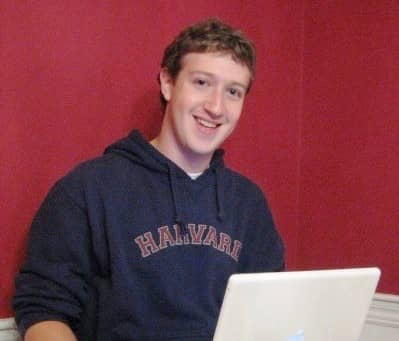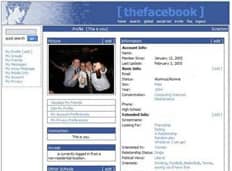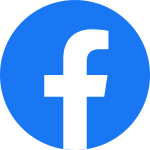Facebook is globally, the most used social media and social networking service.
Over the years it has become such a Phenomenon it has shown influences to the economy, society, emotion health, culture, politics and even the environment.
History
Mark Zuckerberg built a website called "Facemash" in 2003 while attending Harvard University.
The site was comparable to Hot or Not and used "photos compiled from the online face books of nine Houses, placing two next to each other at a time and asking users to choose the "hotter" person". Facemash attracted 450 visitors and 22,000 photo-views in its first four.
The site was sent to several campus group list servers, but was shut down a few days later by Harvard administration. Zuckerberg faced expulsion and was charged with breaching security, violating copyrights and violating individual privacy. Ultimately, the charges were dropped.

Supply and demand
A "face book" is a student directory featuring photos and personal information.
In 2003, Harvard had only a paper version along with private online directories. Zuckerberg told The Harvard Crimson:
"Everyone's been talking a lot about a universal face book within Harvard.
I think it's kind of silly that it would take the University a couple of years to get around to it.
I can do it better than they can, and I can do it in a week."
In January 2004, Zuckerberg coded a new website, known as "TheFacebook", inspired by a Crimson editorial about Facemash, stating: "It is clear that the technology needed to create a centralized Website is readily available ... the benefits are many." Zuckerberg met with Harvard student Eduardo Saverin, and each of them agreed to invest $1,000 in the site. On February 4, 2004, Zuckerberg launched "TheFacebook", originally located at thefacebook.com.

Expansion
Membership was initially restricted to students of Harvard College. Within a month, more than half the undergraduates had registered. Dustin Moskovitz, Andrew McCollum, and Chris Hughes joined Zuckerberg to help manage the growth of the website.
March 2004 : Facebook expanded to Columbia, Stanford and Yale. It then became available to all Ivy League colleges, Boston University, NYU, MIT, and successively most universities in the United States and Canada.
June 2004: It received its first investment later that month from PayPal co-founder Peter Thiel.
May 2005 : the company dropped "the" from its name after purchasing the domain name Facebook.com for US$200,000. The domain had belonged to AboutFace Corporation. Accel Partners invested $12.7 million in Facebook, and Jim Breyer added $1 million of his own money. A high-school version of the site also launched in September 2005. Eligibility expanded to include employees of several companies, including Apple Inc. and Microsoft.
September 2006 : Facebook opened to everyone at least 13 years old with a valid email address.
October 2007: Microsoft announced that it had purchased a 1.6% share of Facebook for $240 million, giving Facebook a total implied value of around $15 billion. Microsoft's purchase included rights to place international advertisements. By late 2007, Facebook had 100,000 pages on which companies promoted themselves. Organization pages began rolling out in May 2009.
A success story
- September 2009: Facebook said that it had achieved positive cash flow for the first time.
Compete.com study ranked Facebook the most used social networking service by worldwide monthly active users. - November 2010: 500 million users. Half of the site's membership used Facebook daily, for an average of 34 minutes, while 150 million users accessed the site from mobile devices.
Based on SecondMarket Inc. Facebook's value was $41 billion. The company had slightly surpassed eBay to become the third largest American web company after Google and Amazon.com. - June 2011: Facebook reached one trillion page views in the month of June 2011, making it the most visited website tracked by DoubleClick. According to a Nielsen study, Facebook had in 2011 become the second-most accessed website in the U.S. behind Google.
- October 2012: Facebook was valued at $104 billion, the largest valuation to that date.
Facebook had one billion monthly active users,including 600 million mobile users, 219 billion photo uploads and 140 billion friend connections - May 2013: Based on its 2012 income of $5 billion, Facebook joined the Fortune 500 list for the first time in May 2013, ranked 462.
Improvements
- 2011: Removing profiles for violations such as spam, graphic content and underage use, as part of its efforts to boost cyber security.
- 2015: Facebook's algorithm was revised in an attempt to filter out false or misleading content, such as fake news stories and hoaxes.
- 2016: Combat fake news by using fact checkers from sites like FactCheck.org and Associated Press,
- 2019: Provide users with "authoritative information" on the topic of vaccines.
- Facebook also began blocking white nationalist, white supremacist, and white separatist content, saying that they could not be meaningfully separated. Previously, Facebook had only blocked overtly supremacist content.
- 2021: Facebook tweaked the news feed to quantify the trustworthiness and quality of a news source.
How to use?
Facebook can be accessed from devices with Internet connectivity, such as personal computers, tablets and smartphones. After registering, users can create a profile revealing information about themselves. They can post text, photos and multimedia which is shared with any other users that have agreed to be their "friend", or, with a different privacy setting, with any reader. Users can also use various embedded apps, join common-interest groups, buy and sell items or services on Marketplace, and receive notifications of their Facebook friends' activities and activities of Facebook pages they follow.Extra functions
- June 2012: Facebook announced that it was introducing clickable hashtags to help users follow trending discussions, or search what others are talking about on a topic
- October 2016: Facebook announced a fee-based communications tool called Workplace that aims to "connect everyone" at work.
- September 2017:Facebook announced it would spend up to US$1 billion on original shows for its Facebook Watch platform.
- May 2018 at F8: the company announced it would offer its own dating service.
- October 2019: Facebook News, which features selected stories from news organizations.
- August 2020: Facebook started integrating the direct messaging service of Instagram with its own Messenger for both iOS and Android devices.
- September 2020: Facebook launched a climate science information centre to promote authoritative voices on climate change and provide access of “factual and up-to-date” information on climate science.


Appearance

On April 19 Facebook modified its logo to remove the faint blue line at the bottom of the "F" icon. The letter F moved closer to the edge of the box. On May 2, 2019 at F8, the company announced its new vision with the tagline "the future is private". A redesign of the website and mobile app was introduced, dubbed as "FB5". The event also featured plans for improving groups, a dating platform, end-to-end encryption on its platforms, and allowing users on Messenger to communicate directly with WhatsApp and Instagram users.

.jpg)